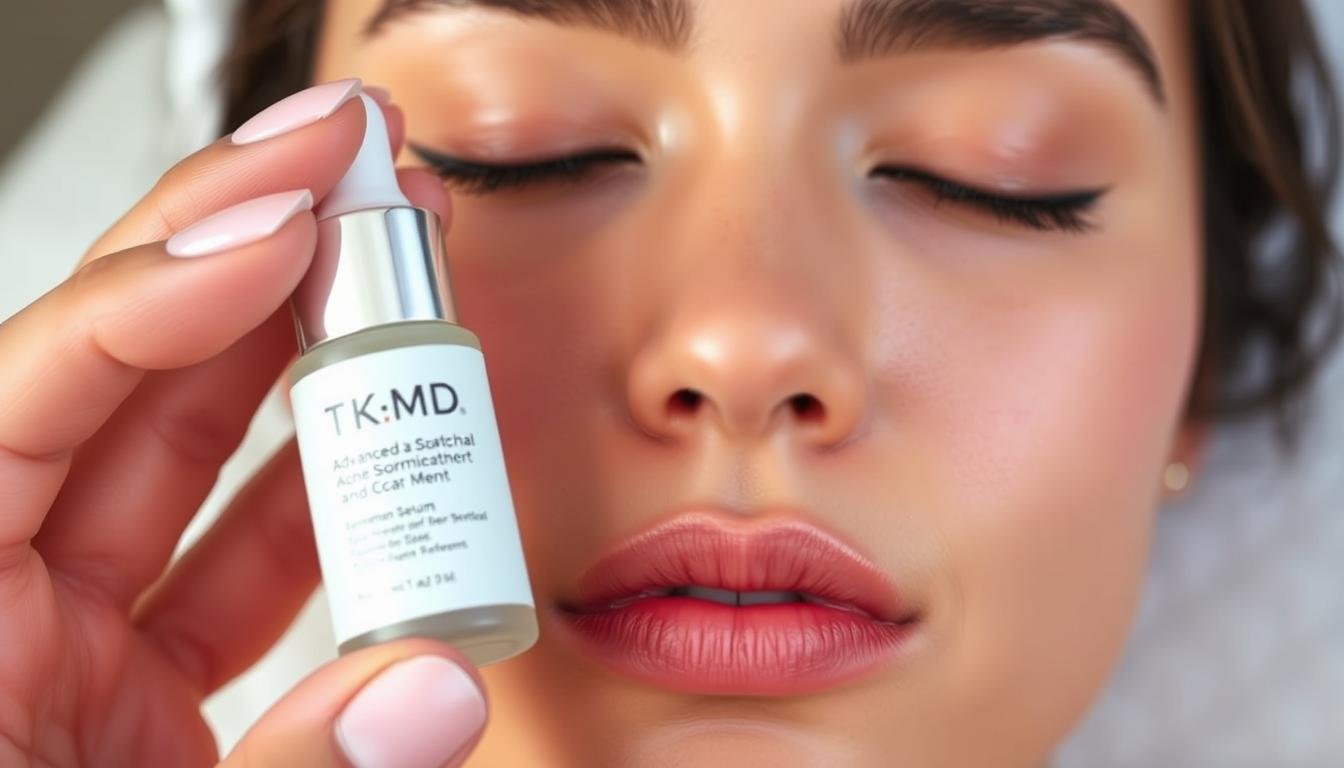Acne scars can be a persistent and frustrating problem, affecting not only the skin’s appearance but also one’s emotional well-being. The formation of acne scars occurs when acne lesions heal, leaving behind indentations or discolorations on the skin.
Treating acne scars effectively requires understanding the different types of scars and the various treatment options available, from professional procedures like microdermabrasion and laser resurfacing to at-home care routines.
Finding the right treatment can be overwhelming, but our comprehensive guide will walk you through the most effective solutions for your specific skin concerns, helping you achieve smoother, more even-toned skin.
Key Takeaways
- Understanding the causes and types of acne scars is crucial for effective treatment.
- Various treatment options are available, including professional procedures and at-home care.
- Consistency and patience are key to achieving visible results in treating acne scars.
- The right treatment approach depends on the type of acne scar and individual skin type.
- A comprehensive guide can help navigate the numerous treatment options available.
Understanding Acne Scars and Their Impact
Understanding the nature of acne scars is crucial for determining the most effective treatment approach. Acne scars result from the body’s attempt to heal the skin after an acne lesion has caused damage. The process involves various biological mechanisms that can lead to different types of scars.
Different Types of Acne Scars
Acne scars are primarily categorized into two types based on their appearance relative to the surrounding skin: atrophic and hypertrophic scars.
Atrophic Scars
Atrophic scars are depressions in the skin that occur due to the loss of collagen during the healing process of acne lesions. They are further classified into ice pick, rolling, and boxcar scars based on their appearance and depth.
- Ice pick scars are narrow, deep scars that extend into the dermis.
- Rolling scars are wider than ice pick scars and give the skin a wave-like appearance.
- Boxcar scars are broad depressions with sharp edges, resembling the scars left by chickenpox.
Hypertrophic and Keloid Scars
Hypertrophic and keloid scars, on the other hand, are raised scars that occur due to an overproduction of collagen. Hypertrophic scars remain within the boundaries of the original wound, while keloid scars extend beyond it.
How Acne Scars Form
The formation of acne scars is closely linked to the inflammatory process associated with acne lesions. When acne becomes severe, it can lead to significant inflammation, which triggers the body’s natural wound healing response.
The process involves the action of various cells, including fibroblasts and inflammatory cells, and is mediated by cytokines. The outcome can be either the destruction of collagen, leading to atrophic scars, or the overproduction of collagen, resulting in hypertrophic or keloid scars.
| Scar Type | Cause | Characteristics |
|---|---|---|
| Atrophic | Collagen loss | Depressed, ice pick, rolling, boxcar |
| Hypertrophic/Keloid | Collagen overproduction | Raised, extends beyond original wound in keloids |
Understanding these mechanisms is essential for developing effective treatments for acne scars. The severity and type of scarring can significantly impact the choice of treatment and the likelihood of successful outcomes.
Factors That Influence Acne Scar Treatment Success
The success of acne scar treatment is multifaceted, relying on various critical factors. Understanding these elements is crucial for setting realistic expectations and achieving optimal results. Whether you’re considering professional treatments or at-home remedies, several key considerations can significantly impact the effectiveness of your chosen treatment.
Skin Type and Tone Considerations
One of the primary factors influencing acne scar treatment success is skin type and tone. Different skin types respond differently to various treatments. For instance, individuals with sensitive skin may need to avoid certain treatments that could cause irritation, such as chemical peels or laser resurfacing. On the other hand, those with darker skin tones may be at a higher risk for certain side effects, like hyperpigmentation, from treatments such as laser therapy. It’s essential to consult with a dermatologist to determine the most suitable treatment based on your skin type and tone.
Scar Age and Severity
The age and severity of acne scars also play a significant role in determining treatment success. Generally, newer scars are easier to treat than older ones because they haven’t had time to fully mature and become more entrenched. The severity of the scarring, including its depth and size, will influence the choice of treatment and the number of sessions required. For example, deep, boxcar scars may require more aggressive treatments like microneedling or dermal fillers, while mild scarring might be addressed with topical treatments or chemical peels.
Realistic Expectations for Treatment Results
Having realistic expectations is crucial when undergoing acne scar treatment. While various treatments can significantly improve the appearance of acne scars, complete elimination is not always possible. Clinical studies have shown varying improvement percentages for different treatment modalities. For instance, laser resurfacing can improve scar appearance by 50-80%, while chemical peels may offer a 20-50% improvement. Understanding these potential outcomes helps in setting realistic goals and appreciating the progress made during treatment.
| Treatment Modality | Typical Improvement Percentage | Number of Sessions Required |
|---|---|---|
| Laser Resurfacing | 50-80% | 3-5 sessions |
| Chemical Peels | 20-50% | 4-6 sessions |
| Microneedling | 40-70% | 3-4 sessions |
By understanding the factors that influence acne scar treatment success, individuals can make informed decisions about their treatment options and have realistic expectations about the results. Patience and consistency are key, as achieving optimal results often requires multiple treatment sessions and a commitment to post-treatment care.
Professional vs. At-Home Acne Scar Treatments
When it comes to tackling acne scars, individuals are often faced with the dilemma of choosing between professional treatments and at-home remedies. Professional treatments, such as laser resurfacing and chemical peels, are typically performed in a dermatologist’s office and can be quite effective. However, they can also be expensive and may require multiple sessions.
On the other hand, at-home treatments, including over-the-counter products and devices, offer a more affordable and convenient option. These treatments can be used consistently over time to achieve noticeable improvements in the appearance of acne scars.
When to See a Dermatologist
It’s essential to consult a dermatologist if you have severe or persistent acne scars. A dermatologist can assess your skin and recommend the most effective treatment options. They can also provide guidance on how to use at-home treatments in conjunction with professional treatments for optimal results.
Additionally, if you’re experiencing emotional distress due to your acne scars, a dermatologist can offer support and help you develop a treatment plan that addresses your specific needs.
Cost Comparison of Treatment Options
The cost of acne scar treatments varies widely depending on the type of treatment and the location. Professional treatments, such as Fraxel laser sessions, can cost upwards of $1,000 per session in major cities like New York. In contrast, at-home treatments can be significantly more affordable, with prices ranging from $20 to $100 for products and devices.

Timeline for Visible Results
The timeline for visible results from acne scar treatments can vary significantly depending on the treatment modality. For instance, dermal fillers can provide immediate results, while retinoids and chemical peels may take several months to show noticeable improvements.
Understanding the biological processes that determine how quickly results appear, such as collagen remodeling and skin cell turnover rates, can help set realistic expectations for treatment outcomes.
Consistent treatment and patience are key to achieving optimal results. Combining different treatment modalities can also accelerate visible improvements.
The Best Acne Scar Treatment Options: Medical Procedures
Medical procedures provide a variety of approaches to treating acne scars, catering to different skin types and scar severity. These treatments are often considered when at-home remedies and topical treatments fail to deliver desired results.
Laser Resurfacing Treatments
Laser resurfacing is a popular medical procedure for treating acne scars. It works by using high-energy lasers to remove damaged skin layers, promoting collagen production and revealing smoother skin. There are different types of lasers used for resurfacing, including ablative and non-ablative lasers, each with its own benefits and suitability for different skin types and scar conditions.
The treatment can be tailored to individual needs, with some lasers targeting the deeper layers of the skin and others focusing on the surface. Laser resurfacing not only improves the appearance of acne scars but also enhances overall skin texture.
Chemical Peels for Acne Scars
Chemical peels are another effective treatment for acne scars. They involve applying a solution to remove the top layers of the skin, helping to reduce the appearance of scars and hyperpigmentation. The depth and type of peel can be adjusted based on the individual’s skin condition and desired outcome.
- Superficial peels gently exfoliate the surface of the skin.
- Medium peels penetrate deeper, addressing more pronounced acne scars.
- Deep peels offer the most dramatic results but require longer recovery times.
Microneedling and Radiofrequency
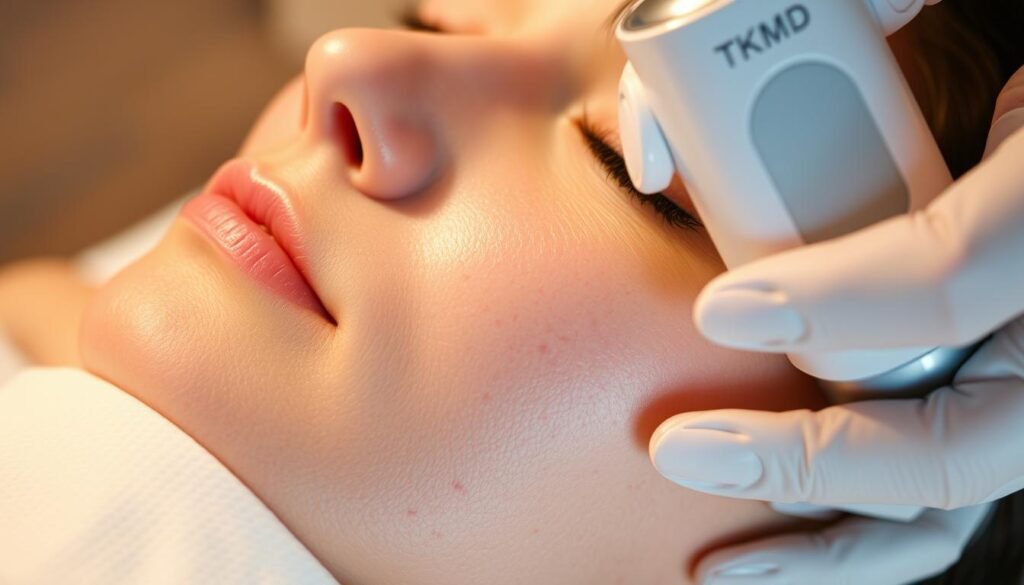
Microneedling and radiofrequency (RF) are innovative treatments that stimulate collagen production to improve the appearance of acne scars. Microneedling involves creating micro-injuries in the skin to prompt a healing response, while RF uses non-ionizing electromagnetic radiation to heat the dermal layer, promoting collagen remodeling.
The combination of microneedling and RF can be particularly effective for treating depressed acne scars, as it not only stimulates collagen production but also tightens the skin.
Dermal Fillers and Injections
Dermal fillers offer an immediate solution for depressed acne scars by adding volume beneath them. Different types of fillers, such as hyaluronic acid, calcium hydroxylapatite, and poly-L-lactic acid, can be used depending on the scar type and desired duration of results.
- Hyaluronic acid fillers provide temporary improvement and are reversible.
- Calcium hydroxylapatite fillers offer longer-lasting results and stimulate collagen production.
- Poly-L-lactic acid fillers are biostimulatory, promoting gradual collagen production for long-term improvement.
Techniques like subcision can enhance the effectiveness of dermal fillers by releasing fibrous bands that pull down on the scars, allowing for better filler placement and more natural-looking results.
Topical Ingredients That Actually Work for Acne Scars
When it comes to tackling acne scars, the right topical ingredients can make all the difference in achieving smoother, clearer skin. The key is to identify products that contain clinically-backed components that address the root causes of scarring, such as inflammation, hyperpigmentation, and collagen disruption.
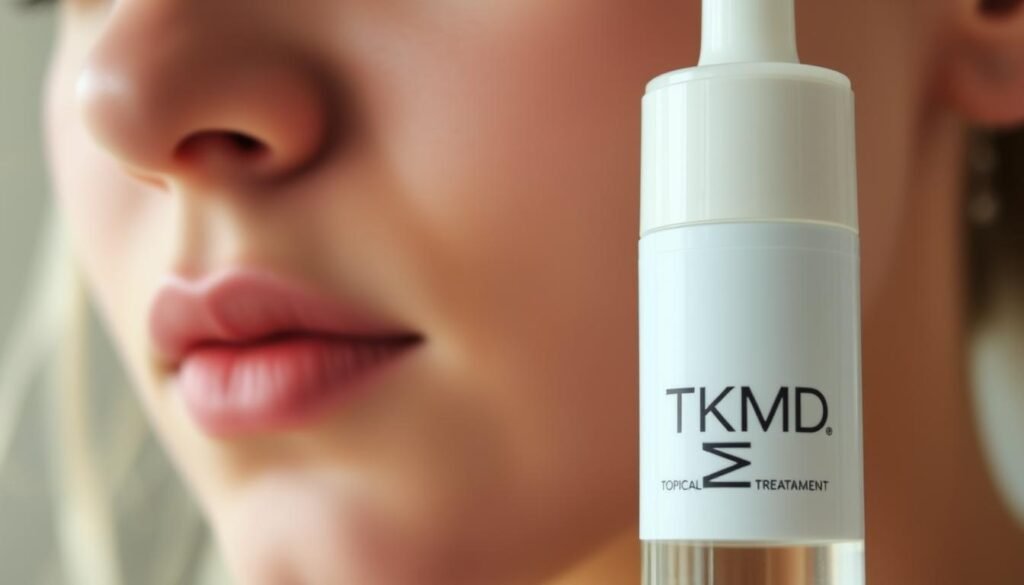
Retinoids and Their Benefits
Retinoids, derivatives of vitamin A, are well-documented for their ability to promote cell turnover, reduce inflammation, and prevent clogged pores, all of which contribute to minimizing the appearance of acne scars. By stimulating collagen production, retinoids can help fill in depressed scars, improving skin texture and tone.
Regular use of retinoid-based products can lead to significant improvements in skin appearance, making them a staple in many acne treatment regimens.
Acids: Glycolic, Salicylic, and Azelaic
Alpha-hydroxy acids like glycolic acid and beta-hydroxy acids such as salicylic acid are effective exfoliants that help remove dead skin cells, unclog pores, and promote brighter, more even-toned skin. Azelaic acid, in particular, has been shown to reduce inflammation and hyperpigmentation associated with acne and acne scars.
These acids work synergistically to improve skin texture and reduce the visibility of scars, making them valuable components of a comprehensive acne treatment plan.
Vitamin C and Niacinamide
Vitamin C is a powerful antioxidant that not only brightens the skin but also reduces the appearance of hyperpigmentation by inhibiting melanin production. When combined with niacinamide, which improves skin’s barrier function and reduces inflammation, the result is a more even-toned complexion with reduced visibility of acne scars.
Together, vitamin C and niacinamide offer a potent combination that addresses both active acne and residual scarring, making them excellent additions to a topical treatment regimen aimed at minimizing hyperpigmentation.
By incorporating these topical ingredients into a consistent skincare routine, individuals can effectively reduce the appearance of acne scars and achieve healthier, more resilient skin.
Best Overall Acne Scar Treatment
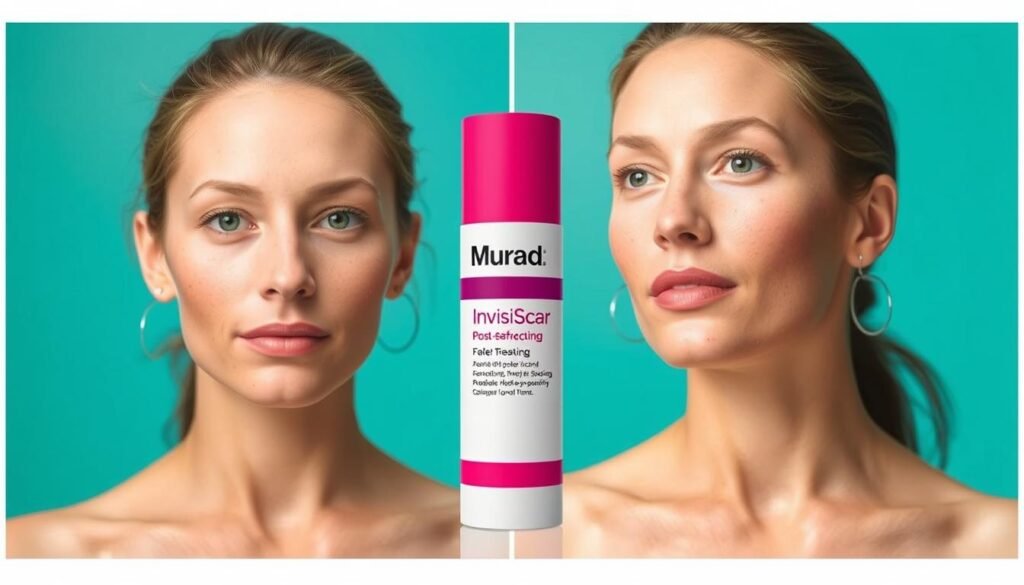
For those seeking an effective solution to acne scars, Murad InvisiScar Post-Acne Resurfacing Treatment stands out as a top choice. This product has garnered attention for its comprehensive approach to minimizing the appearance of acne scars.
Key Ingredients and How They Work
The efficacy of Murad InvisiScar Post-Acne Resurfacing Treatment can be attributed to its powerful ingredients, including salicylic acid, hydroxytyrosol, and vitamin C. Salicylic acid helps exfoliate the skin, unclog pores, and reduce inflammation. Hydroxytyrosol, an antioxidant, protects the skin from environmental stressors, while vitamin C brightens and evens out skin tone. Together, these ingredients work synergistically to improve the appearance of acne scars over time.
Application Tips and Expected Results
For optimal results, apply Murad InvisiScar Post-Acne Resurfacing Treatment in the morning and/or evening after cleansing. A small amount should be gently massaged into the affected areas. Users can expect to see improvements in the appearance of their acne scars within weeks of consistent use, with continued enhancement over several months. The treatment not only helps in reducing the depth and size of scars but also improves overall skin texture and tone.
By incorporating Murad InvisiScar Post-Acne Resurfacing Treatment into your skincare routine, you can achieve significant improvements in the appearance of acne scars, leading to clearer, healthier-looking skin.
Best Retinoid Treatment for Acne Scars
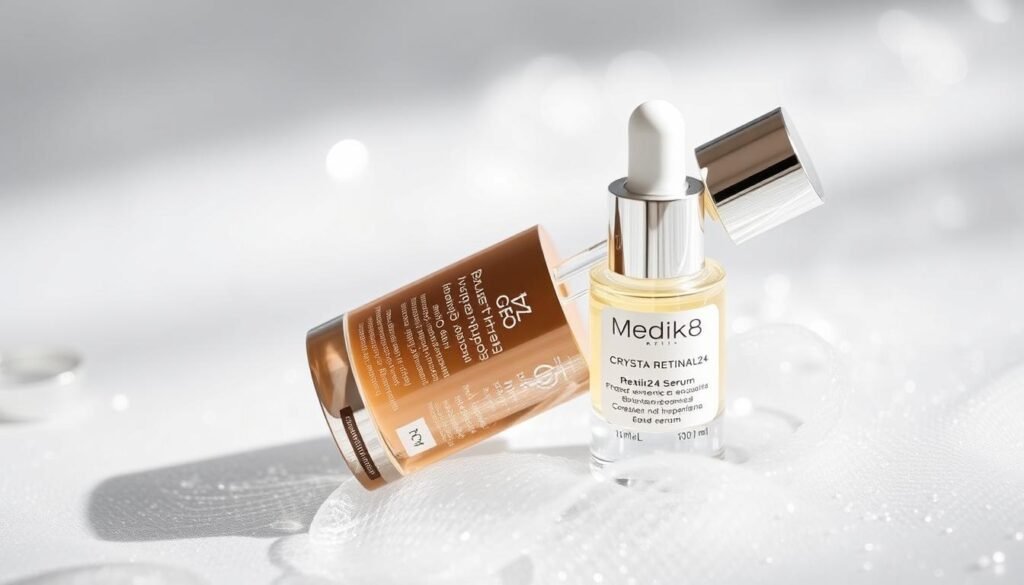
With the rise of retinoid treatments, individuals with acne scars now have a potent tool in their skincare arsenal. Retinoids, derivatives of vitamin A, are renowned for their ability to promote cell turnover, reduce the appearance of fine lines, and improve skin texture. The Medik8 Crystal Retinal24 Serum is a standout product in this category, formulated to tackle acne scars effectively.
How Retinol Helps Fade Acne Scars
Retinol, a key ingredient in the Medik8 Crystal Retinal24 Serum, works by enhancing cell turnover and stimulating collagen production. This process helps to gradually fade acne scars, revealing smoother, more even-toned skin. The serum’s double-encapsulation system ensures a gradual release of retinol, minimizing potential irritation while maximizing its efficacy.
The incorporation of hydrating ingredients like hyaluronic acid and glycerin further enhances the serum’s tolerability, making it suitable for various skin types, including sensitive skin.
Usage Guidelines for Maximum Effectiveness
To get the most out of the Medik8 Crystal Retinal24 Serum, it’s essential to use it correctly. Start by introducing it into your skincare routine gradually, a process known as retinization, to allow your skin to build tolerance. Apply the serum in the evening, as retinol can make your skin more sensitive to sunlight. Begin with a small amount and gradually increase as your skin becomes more tolerant.
For sensitive skin, consider buffering the serum with a moisturizer to reduce potential irritation. Combining retinoids with antioxidants and peptides can also enhance their efficacy in treating acne scarring and promoting overall skin health.
Best Technology-Based Acne Scar Treatment
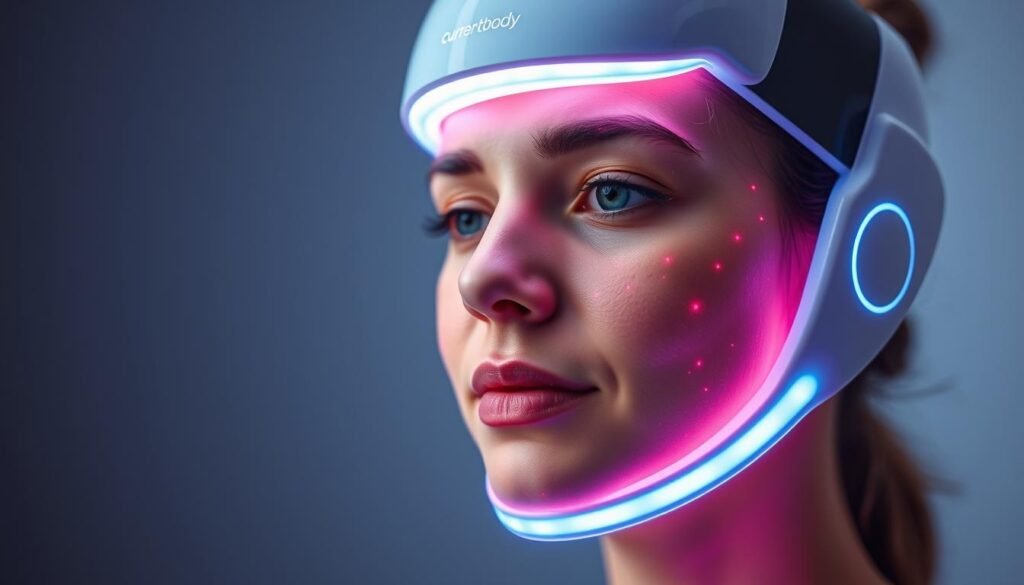
LED light therapy has emerged as a highly effective treatment for acne scars, thanks to devices like the Currentbody LED Light Therapy Face Mask. This technology-based solution offers a non-invasive approach to improving skin texture and reducing the appearance of acne scarring.
How LED Therapy Works on Acne Scars
LED therapy involves the use of different wavelengths of light to target various skin concerns. For acne and acne scars, specific wavelengths can help reduce inflammation, promote collagen production, and improve skin texture. The Currentbody LED Light Therapy Face Mask is designed to be used at home, making it a convenient option for those looking to treat acne and its scars without frequent visits to a dermatologist.
Treatment Protocol and Results Timeline
For best results, the Currentbody LED Light Therapy Face Mask should be used on clean skin five times a week for 10 minutes. Users can expect to see a visible difference in their skin texture and acne scars within four weeks. Consistency is key, and continued use over time will yield the best results. It’s also important to combine LED therapy with a good skincare routine and sun protection to maximize its effectiveness.
By understanding how to use LED therapy correctly and incorporating it into a comprehensive skincare regimen, individuals can effectively reduce the appearance of acne and improve their overall skin health.
Best Spot Treatments for Individual Acne Scars
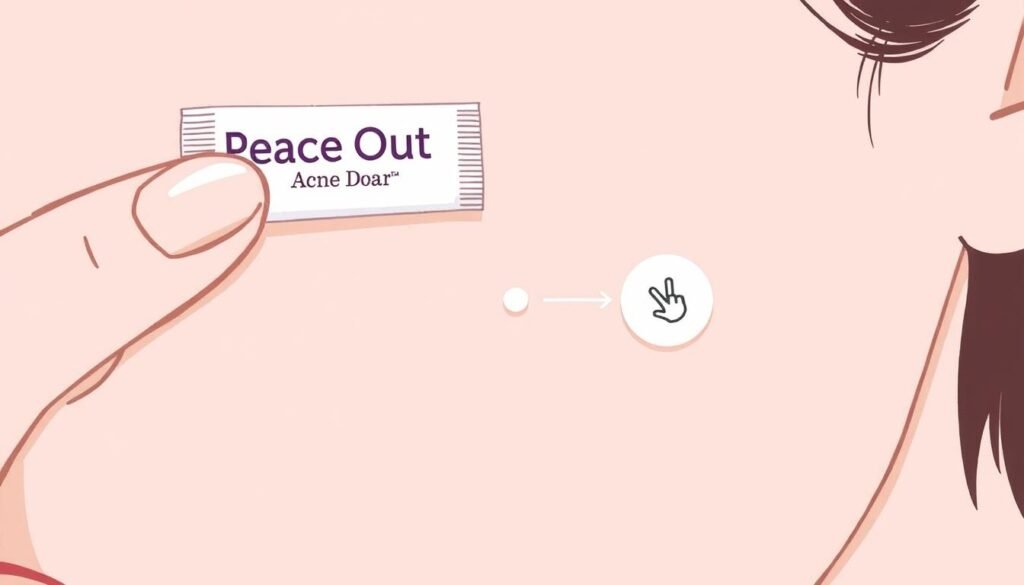
Acne scars can be particularly stubborn, but targeted treatments like Peace Out Acne Dots offer a promising solution. These products are designed to address individual scars, providing a more focused approach to skin care.
Targeted Treatments for Specific Scars
Spot treatments containing active ingredients such as Niacinamide and Salicylic Acid are effective in treating specific types of acne scars. Niacinamide helps in improving skin hyperpigmentation and inflammation, while Salicylic Acid aids in exfoliating the skin, unclogging pores, and reducing the appearance of scars.
For instance, Peace Out Acne Dots utilize microneedles to deliver these ingredients directly into the blemish, allowing for a more targeted and efficient treatment. This approach not only helps in minimizing the appearance of acne scars but also in preventing further scarring by addressing the acne early on.
When and How to Use Spot Treatments
To maximize the effectiveness of spot treatments, it’s crucial to use them at the right time and in the correct manner. Generally, these products are recommended for use in the evening, as part of a consistent skincare routine. Before applying, ensure the skin is properly cleansed and prepared.
Layering spot treatments with other skincare products requires care to avoid irritation. Start with a gentle cleanser, followed by the spot treatment, and then apply other products like moisturizers and sunscreens. Consistency and patience are key, especially when dealing with stubborn hyperpigmentation.
Creating a targeted treatment plan for multiple scars involves prioritizing based on visibility and severity. For those with several scars at different stages, it’s essential to be consistent and patient, as treating acne scars is a gradual process.
Best Exfoliating Treatments for Acne Scars

Effective exfoliation is key to reducing the visibility of acne scars, and there are various treatments available to achieve this. Exfoliating helps remove dead skin cells, unclog pores, and improve skin texture, making it an essential step in managing acne scars.
How Exfoliation Improves Scar Appearance
Exfoliation improves the appearance of acne scars by removing the top layers of the skin, which can be damaged or hyperpigmented. Using products containing glycolic acid or other alpha-hydroxy acids (AHAs), and beta-hydroxy acids (BHAs) can help in gently removing dead skin cells and promoting cell turnover. This process can help reduce the appearance of acne scars over time, revealing smoother and more even-toned skin.
For instance, products like Dr. Dennis Gross Skincare Alpha Beta Universal Daily Peel Pads are highly effective. These pads contain a combination of AHAs and BHAs to exfoliate the skin, improve texture, and enhance tone. They also include retinol and antioxidants for additional anti-aging benefits.
Frequency and Application Tips
The frequency of exfoliation depends on skin type and sensitivity. For sensitive skin, it’s advisable to start with a lower frequency, such as once or twice a week, and gradually increase as the skin becomes more tolerant. For less sensitive skin, daily exfoliation might be possible with gentle products.
When applying exfoliating treatments, it’s crucial to follow a proper routine: cleanse the skin thoroughly before exfoliating, apply the exfoliant gently, and follow up with a soothing moisturizer to help calm the skin. Be aware of signs of over-exfoliation, such as redness or irritation, and adjust your routine accordingly.
Best Budget-Friendly Acne Scar Treatments
You don’t need to spend a fortune to get rid of acne scars; several affordable treatments can deliver impressive results. One such effective and affordable treatment is Differin Adapalene Gel.
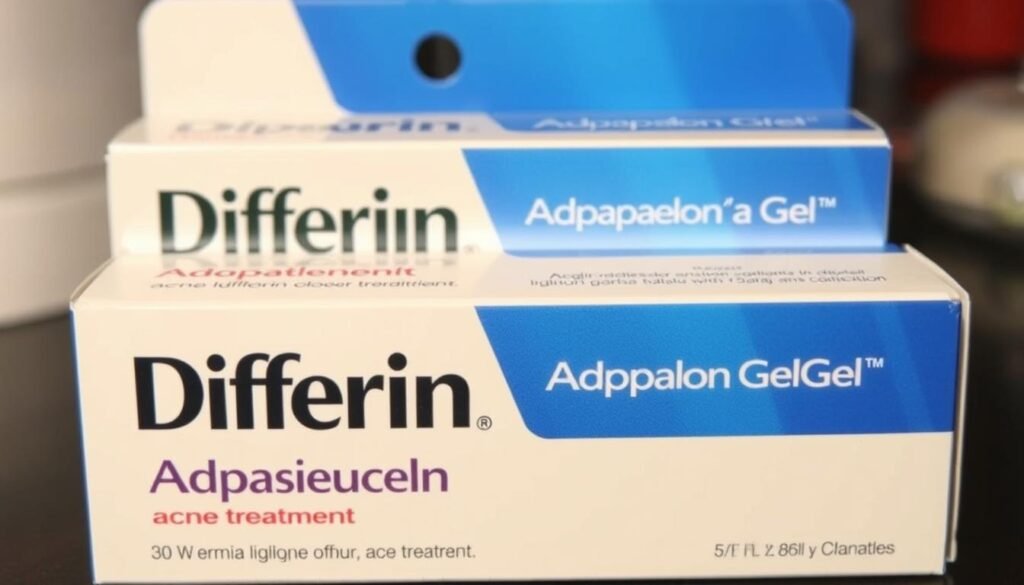
Differin Adapalene Gel has garnered positive reviews from users, with one customer noting, “I had a red mark from a cyst that wouldn’t go away after eight months. I tried all the treatments including lasers and nothing worked. Then I purchased this and it’s working remarkably well! I use it consistently at night and my spot is definitely fading.”
Affordable Options That Deliver Results
Creating an effective acne scar treatment routine on a limited budget requires prioritizing key active ingredients over marketing claims or packaging. Look for products containing retinoids, acids (glycolic, salicylic, and azelaic), and vitamin C, as these are known to help fade acne scars.
Product layering is another strategy to maximize the efficacy of affordable treatments. For instance, using a retinoid product at night and a vitamin C serum in the morning can enhance treatment outcomes without the need for multiple specialized products.
How to Maximize Results with Limited Budget
To get the most out of your budget-friendly acne scar treatments, consider complementing store-bought products with DIY approaches. Gentle physical exfoliation and simple hydrating masks can enhance treatment results.
When shopping for budget products, analyze ingredient lists and concentrations rather than relying on brand names. This helps identify truly effective products. Additionally, know when to splurge versus save; invest in key active ingredients while opting for basic, affordable cleansers and moisturizers.
Best Treatments for Sensitive Skin with Acne Scars
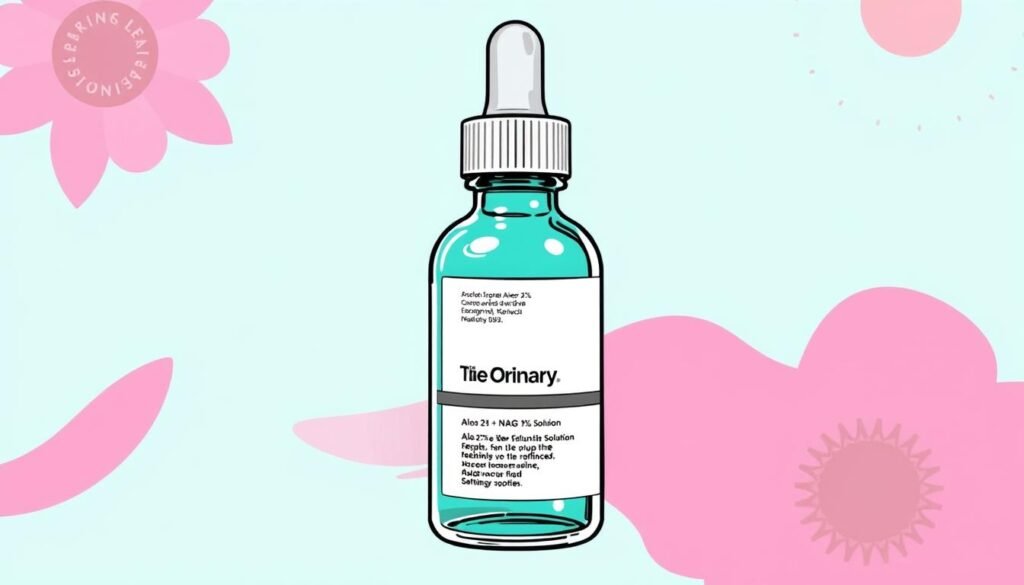
Treating acne scars on sensitive skin requires a thoughtful and gentle strategy to achieve desired results without causing further irritation. Individuals with sensitive skin need to be cautious when selecting treatments to avoid adverse reactions.
Gentle Yet Effective Ingredients
The Ordinary Aloe2% + NAG2% Solution is a great example of a product that combines gentle yet effective ingredients. Aloe vera is known for its soothing properties, while N-Acetyl Glucosamine (NAG) helps in reducing the appearance of acne scars. This solution is not only effective but also affordable and feels lightweight on the skin, as noted in a glowing customer review: “This is a really great solution for acne scarring. It’s affordable and it feels lightweight on the face. I used it to target post-acne scarring and felt like I noticed a difference in my skin.”
Building a Sensitive Skin Routine for Scar Treatment
To build a comprehensive acne scar treatment routine for sensitive skin, it’s essential to introduce active ingredients gradually and monitor the skin for any reactions. Start with a gentle cleanser and moisturizer, then gradually add products containing active ingredients like retinoids or acids. Patch testing new products and waiting for a few days before incorporating them into your routine can help avoid irritation. A morning and evening skincare routine should be created to address acne scars while maintaining the skin barrier.
When creating a skincare routine, it’s also crucial to identify and avoid common irritants in acne scar treatments that may trigger sensitivity reactions. Adapting treatment intensity based on seasonal changes, hormonal fluctuations, and other factors that can affect skin sensitivity is also important.
Best Treatments for Deep, Stubborn Acne Scars
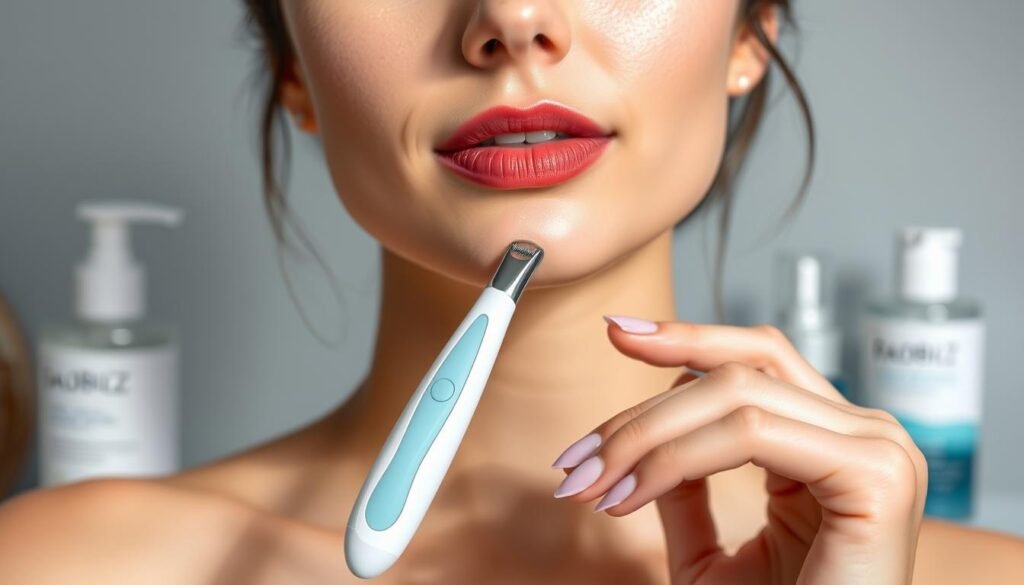
Severe acne scarring can be distressing, but several advanced treatments can help alleviate the condition. Deep, stubborn acne scars require effective and sometimes combined treatment approaches to achieve significant improvement.
Advanced Solutions for Severe Scarring
For severe scarring, treatments like microneedling followed by growth factors, laser resurfacing with PRP (Platelet-rich plasma), or subcision with dermal fillers have shown promising results. The RadBizz DermaRoller for Face, with its 0.25mm microneedles, is a popular at-home treatment that stimulates collagen production and enhances the efficacy of topical ingredients.
According to dermatologist Karan Lal, MD, dermarollers are safe for at-home use if properly maintained. “You have to use 70 percent alcohol to clean your roller before and after use and also be sure you throw it out after one month of consistent use.”
Combining Treatments for Enhanced Results
Combining different treatment modalities can address stubborn acne scars more effectively. For instance, using dermarolling at home can enhance the penetration and efficacy of topical ingredients for deeper scars. It’s crucial to sequence treatments correctly to maximize results while minimizing recovery time and side effects.
A customized treatment plan that addresses different aspects of scarring simultaneously can lead to more comprehensive improvement. This may involve professional treatments like laser resurfacing and chemical peels, alongside consistent at-home care using products with retinoids and acids.
Preventing New Acne Scars While Treating Existing Ones
Treating existing acne scars and preventing new ones requires a comprehensive approach that addresses both the symptoms and the underlying causes.
Daily Skincare Routine Recommendations
A consistent skincare routine is crucial in preventing new acne and subsequent scarring. Using gentle, non-comedogenic products that are suitable for your skin type can help maintain clear skin. For more information on understanding your skin health, visit Dermatology: Understanding Your Skin Health.
Include products containing retinoids, glycolic acid, or salicylic acid, which help exfoliate the skin and unclog pores, reducing the risk of new acne formations.
Sun Protection for Scar Prevention
Sun exposure can significantly impact the appearance of scars and skin health. Using a broad-spectrum sunscreen with a high SPF is essential.
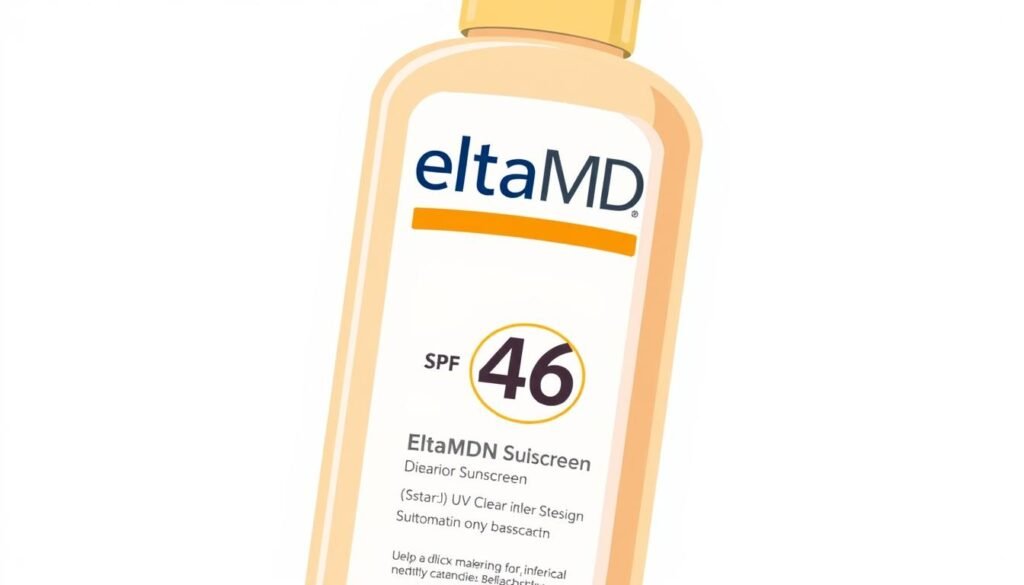
The EltaMD UV Clear Sunscreen is a mineral-based sunscreen that offers SPF 46 protection and contains niacinamide, acting as a natural anti-inflammatory. This product is ideal for those with acne-prone skin and rosacea.
Lifestyle Factors That Affect Scar Healing
Lifestyle factors play a significant role in scar healing and prevention. Nutrition impacts skin healing, with anti-inflammatory foods, antioxidants, and collagen-supporting nutrients being particularly beneficial.
Stress can negatively affect wound healing and collagen production, potentially worsening acne scars. Ensuring adequate sleep quality is also crucial, as it impacts skin regeneration and repair.
Smoking and excessive alcohol consumption can impair healing by reducing blood flow and increasing inflammation, making scars more noticeable over time.
Conclusion: Creating Your Personalized Acne Scar Treatment Plan
Addressing acne scars effectively means developing a treatment plan that suits your skin type and scar characteristics. To achieve the best results, it’s crucial to consider several factors, including the type and severity of your scars, your skin tone, and your budget.
If you’re dealing with multiple types of acne scars or have limited resources, prioritizing treatments is essential. Start by focusing on the most noticeable or bothersome scars, and consider combining treatments for enhanced results. For instance, you might use scar reduction treatments in conjunction with topical creams or gels.
Realistic expectations are vital when treating acne scars. Improvement timelines can vary significantly depending on the treatment chosen and individual skin factors. Using standardized photography can help measure progress objectively. It’s also important to be patient and consistent throughout the treatment journey, as acne scar treatment is often a long-term process.
Consulting a dermatologist, such as Dr. Robyn Gmyrek at UnionDerm in New York City or Dr. Marisa Garshick at MDCS Dermatology, can provide valuable guidance and help you create a tailored treatment plan. During a consultation, you can expect to discuss your skin concerns, treatment options, and the best approach for your specific needs.
Maintaining results long-term requires adapting your treatment approach as your skin needs change over time. This may involve adjusting your skincare routine, protecting your skin from the sun, and addressing lifestyle factors that affect scar healing. By combining appropriate treatments with preventative measures, you can achieve the best long-term outcomes for acne scarring.
Ultimately, addressing acne scars is not just about improving your skin’s appearance; it can also have significant psychological benefits. By taking a comprehensive and informed approach to treatment acne scars, you can enhance your overall well-being and confidence.

